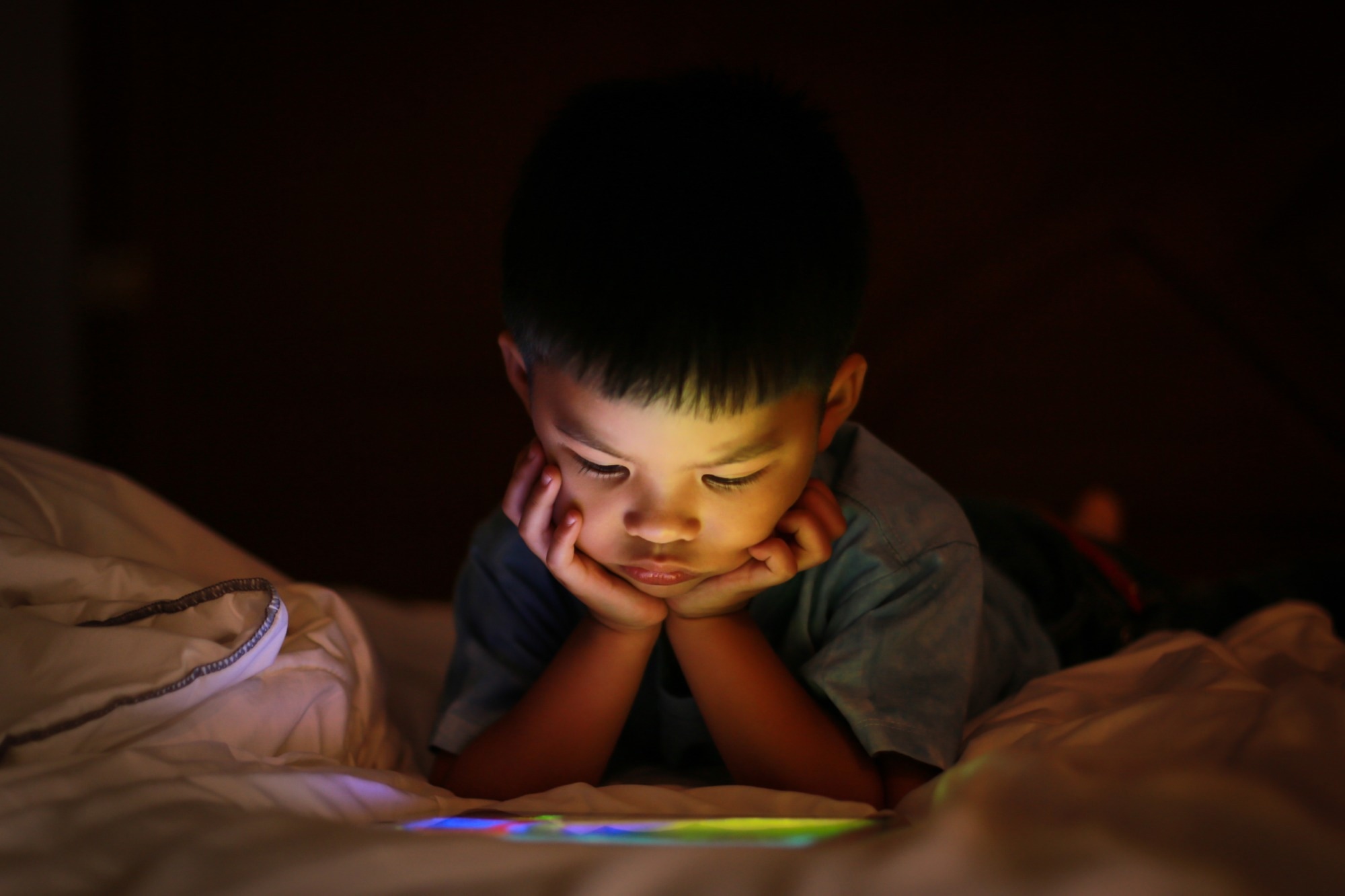In a recent study published in the journal JAMA Network Open, researchers investigated whether the coronavirus disease 2019 (COVID-19) pandemic-related social changes such as attending classes from home and social distancing measures resulted in a sustained increase in children’s screen time.
Study: Trends in Screen Time Use Among Children During the COVID-19 Pandemic, July 2019 Through August 2021. Image Credit: vinnstock / Shutterstock
Background
The disease mitigation measures recommended during the COVID-19 pandemic resulted in the closure of schools, offices, and sports and recreational facilities, significantly reducing children’s time outdoors. In addition, schools switched to online classes, and children’s screen time inevitably increased as the mode of learning became remote. While screen time during the early stages of the pandemic was beneficial for children to continue learning and socializing with their friends and classmates, it is unclear whether the increased screen time persisted after the pandemic-related social distancing measures were lifted.
Research suggests that excess screen time is associated with increased sedentary behavior and decreased sleep, leading to obesity. Long periods of screen time have also been linked to mental health issues such as anxiety, depression, an increase in craving behavior, and internalizing and externalizing. Therefore, it is vital to understand whether the social changes during the pandemic resulted in a long-term increase in children’s screen time.
About the study
In the present study, the researchers conducted a longitudinal cohort analysis of data collected through the Environmental Influences on Child Health Outcomes (ECHO) program, which is a collaborative study involving 69 pediatric cohorts in the United States (U.S.) that examines the impacts of environmental exposures on the health outcomes of children. Three out of 16 cohorts that had screen time data during the pre-pandemic period were included in the study.
The participants consisted of parent-child dyads, with children between the ages of four and 12. The study analyzed screen time measures for the children in the eight months leading up to the COVID-19 pandemic and repeated measurements of screen time during two pandemic periods — from December 2020 to the end of April 2021 and between the beginning of May and the end of August 2021.
Screen time was measured based on a parent or caregiver-filled questionnaire that assessed the child’s weekday and weekend frequency of screen use and type of tablet, television, computer, or smartphone. The screen time activities were categorized as total, recreational, and educational. They comprised ten activities: watching videos or television shows, playing educational games, video games, or computer games, doing homework on a tablet or computer, video chatting, browsing, etc. Since remote schooling only began after the COVID-19 pandemic, it was not included in the study, but playing educational games was considered an educational screen time activity. The rest were considered recreational activities.
Additionally, the child’s access to social media was also assessed. Finally, the analysis considered sociodemographic characteristics such as age, assigned sex at birth, race and ethnicity, mother’s highest level of education, and household income.
Results
The results suggested that among children across the U.S., the total screen time and the educational and recreational screen time had increased during the COVID-19 pandemic and remained elevated during the progression of the pandemic. The percentage of social media accounts among children also increased during the pandemic.
While the mean screen time during the pre-pandemic period was 4.4 hours each day, the first pandemic period between December 2020 and April 2021 saw a 1.75-hour increase in screen time per day, while during the second pandemic period between May and August 2021, the screen time increased by 1.11 hours each day.
The mean recreational screen time before the COVID-19 pandemic was about four hours each day, which increased to 4.89 hours per day during the first and 4.70 hours per day during the second pandemic period. Similarly, the educational screen time was on average, 0.5 hours each day before the onset of the COVID-19 pandemic, which increased by 0.93 hours and 0.46 hours each day during the first and second pandemic periods, respectively.
The researchers observed that the increase in screen time persisted for over a year into the pandemic, well after many of the COVID-19-associated restrictions had been lifted. Furthermore, screen times were higher among children of Hispanic ethnicity or Black race and older children whose mothers did not have a college-level education. Screen times were also higher among children from families with lower socioeconomic status. The authors hypothesized that the association between higher screen time and socioeconomic, racial, and ethnic disparities could be due to the lack of opportunities and access to structured activities outside the school, increasing the reliance on electronic gadgets.
Conclusions
Overall, the results indicated that average screen time across educational and recreational activities had increased during the COVID-19 pandemic when the social restrictions enforced to limit the spread of the disease forced children to stay indoors. Moreover, this increase in screen time persisted even after the pandemic-associated social restrictions were lifted. Furthermore, children of racial and ethnic minorities and from families with a lower socioeconomic status spent long periods using electronic devices, indicating a lack of access to structured outdoor activities.
Journal reference:
- Hedderson, M. M., Bekelman, T. A., Li, M., Knapp, E. A., Palmore, M., Dong, Y., Elliott, A. J., Friedman, C., Galarce, M., Gilbert-Diamond, D., Glueck, D., Hockett, C. W., Lucchini, M., McDonald, J., Sauder, K., Zhu, Y., Karagas, M. R., Dabelea, D., Ferrara, A., & on, I. (2023). Trends in screen time use among children during the COVID-19 pandemic, July 2019 through August 2021. JAMA Network Open, 6, e2256157–e2256157, https://doi.org/10.1001/jamanetworkopen.2022.56157, https://jamanetwork.com/journals/jamanetworkopen/fullarticle/2801457
